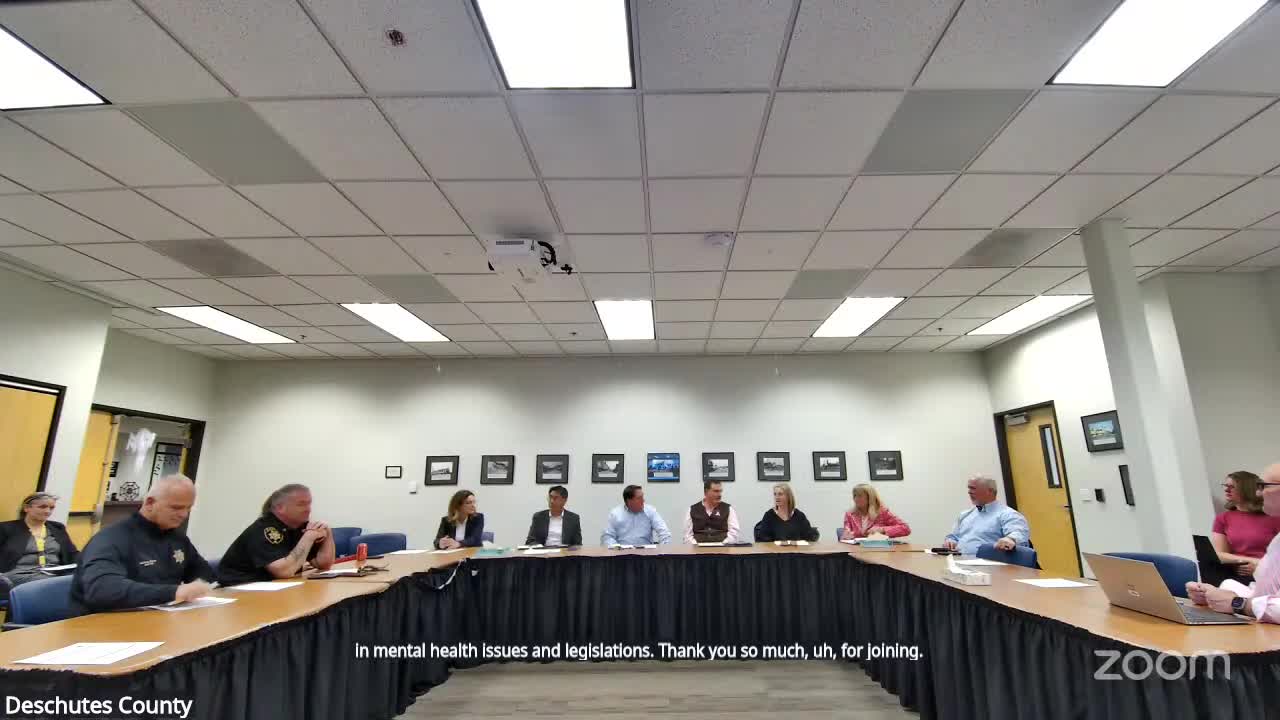Judges, health officials outline aid‑and‑assist, civil‑commitment pressures as state priorities limit placements
October 16, 2025 | Deschutes County, Oregon
This article was created by AI summarizing key points discussed. AI makes mistakes, so for full details and context, please refer to the video of the full meeting. Please report any errors so we can fix them. Report an error »

Judges and county behavioral‑health officials described growing pressure from aid‑and‑assist and civil‑commitment caseloads and said statewide prioritization of aid‑and‑assist patients at the Oregon State Hospital is limiting placement options for other people who need residential treatment.
Judge Emerson said the county had 99 aid‑and‑assist hearings in 2024 and was on track for additional increases in 2025, with nearly 57 defendants on current aid‑and‑assist dockets at the time of the meeting. She said state hospital placements are being prioritized for aid‑and‑assist cases and forensic populations, leaving fewer slots for civil commitments and other residential placements.
Emerson and health staff described consequences: people who need secure residential treatment facilities (SRTFs) or other high‑acuity placements often have no available beds and may remain in jail or be placed back into the community without sufficient supports. She said state and local rules (including reference to the Mosman order) and new legislative changes such as the recently passed House Bill 2005 affect placement criteria but do not solve local capacity constraints.
Health director Holly Harris and court participants said some new local capacity is coming — an SRTF in Redmond and other beds the county expects over the next two years — but they cautioned that the beds will likely be full and that statewide resources remain insufficient to meet demand. They called for community restoration capacity, supportive housing and continued collaboration among county behavioral health, the jail and hospitals.
No court order changes or new local funding allocations were decided at the meeting; participants said the county will continue to coordinate with state agencies and monitor legislative developments.
Judge Emerson said the county had 99 aid‑and‑assist hearings in 2024 and was on track for additional increases in 2025, with nearly 57 defendants on current aid‑and‑assist dockets at the time of the meeting. She said state hospital placements are being prioritized for aid‑and‑assist cases and forensic populations, leaving fewer slots for civil commitments and other residential placements.
Emerson and health staff described consequences: people who need secure residential treatment facilities (SRTFs) or other high‑acuity placements often have no available beds and may remain in jail or be placed back into the community without sufficient supports. She said state and local rules (including reference to the Mosman order) and new legislative changes such as the recently passed House Bill 2005 affect placement criteria but do not solve local capacity constraints.
Health director Holly Harris and court participants said some new local capacity is coming — an SRTF in Redmond and other beds the county expects over the next two years — but they cautioned that the beds will likely be full and that statewide resources remain insufficient to meet demand. They called for community restoration capacity, supportive housing and continued collaboration among county behavioral health, the jail and hospitals.
No court order changes or new local funding allocations were decided at the meeting; participants said the county will continue to coordinate with state agencies and monitor legislative developments.
View full meeting
This article is based on a recent meeting—watch the full video and explore the complete transcript for deeper insights into the discussion.
View full meeting
